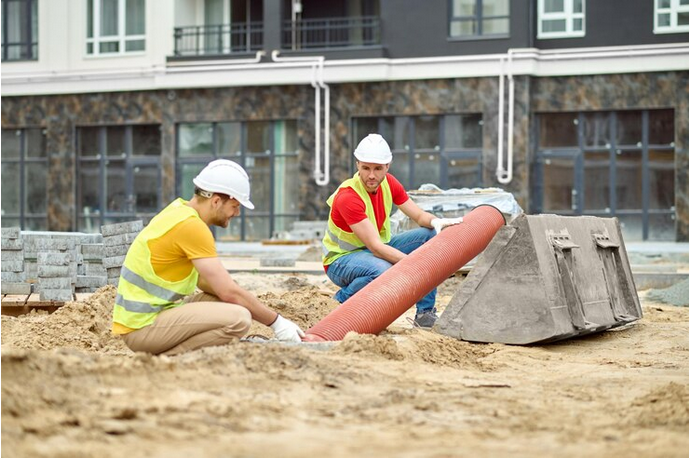In the realm of civil engineering, the role of a drainage design specialist is pivotal in ensuring the efficient and sustainable management of water flow within urban and rural landscapes. The journey from conceptualizing drainage solutions to overseeing their construction is a multifaceted process that requires expertise, creativity, and a deep understanding of hydraulic principles. In this exploration, we uncover the stages of this journey, shedding light on the responsibilities, challenges, and gratifications that come with being a drainage design specialist.
1. Conceptualization and Planning:
- Understanding Project Requirements: The journey begins with a comprehensive understanding of the project requirements. Drainage design specialists work closely with project managers, architects, and urban planners to grasp the specific needs and challenges associated with a particular site.
- Site Assessment: Conducting thorough site assessments is a critical aspect of the conceptualization phase. Specialists analyze topography, soil composition, and existing drainage infrastructure to identify potential issues and opportunities.
- Regulatory Compliance: Navigating through local regulations and environmental standards is an integral part of the planning process. Drainage design specialists must ensure that their proposed solutions adhere to legal requirements and contribute to sustainable development.
2. Hydraulic Modeling and Analysis:
- Utilizing Advanced Software: The journey involves the application of cutting-edge hydraulic modeling software. Drainage design specialists leverage these tools to simulate water flow, assess potential risks, and optimize the performance of proposed drainage systems.
- Analyzing Flow Patterns: Understanding the intricate dynamics of water flow is crucial. Specialists conduct detailed analyses to predict how water will behave under various conditions, accounting for factors such as rainfall intensity and terrain variations.
- Risk Assessment: Identifying potential risks, including flooding, erosion, and water pollution, is a key responsibility. Drainage design specialists employ risk assessment techniques to develop strategies that mitigate these challenges effectively.
3. Design Development:
- Tailoring Solutions: With a solid understanding of site conditions and hydraulic behaviors, specialists proceed to develop tailored drainage solutions. This involves the design of open channels, culverts, stormwater management features, and other components to efficiently manage water flow.
- Balancing Functionality and Aesthetics: The design phase requires a delicate balance between functionality and aesthetics. Drainage design specialists aim to create solutions that not only serve their primary purpose but also integrate seamlessly into the overall landscape.
- Sustainable Practices: Embracing sustainable practices is a growing emphasis in modern drainage design. Specialists explore eco-friendly options such as permeable pavements and green infrastructure to enhance the environmental performance of their designs.
4. Collaboration and Coordination:
- Team Collaboration: The journey from concept to construction involves constant collaboration with various stakeholders. Drainage design specialists work closely with civil engineers, architects, environmental scientists, and construction teams to ensure the seamless integration of their designs into larger projects.
- Communication Skills: Effective communication is paramount. Specialists must convey complex technical information to non-specialist team members and stakeholders, fostering a shared understanding of the drainage design objectives and requirements.
- Adaptability: Flexibility and adaptability are essential traits. As projects evolve and encounter unforeseen challenges, drainage design specialists must be able to adjust their designs and strategies to address emerging issues.
5. Construction Oversight:
- Quality Assurance: Transitioning from design to construction requires meticulous oversight. Drainage design specialists ensure that construction teams adhere to design specifications, maintaining a high standard of quality throughout the implementation phase.
- Problem-Solving on Site: Unexpected challenges may arise during construction. Specialists are often called upon to provide on-the-spot solutions, drawing on their expertise to address issues and keep the project on track.
- Continuous Evaluation: The journey concludes with a continuous evaluation of the constructed drainage systems. Specialists conduct post-construction assessments to verify the performance of their designs, making any necessary adjustments for optimal functionality.
Conclusion: A Dynamic and Rewarding Journey
The journey of a drainage design specialist is dynamic and multifaceted, requiring a blend of technical expertise, creative problem-solving, and effective collaboration. From the conceptualization of drainage solutions to their construction oversight, specialists play a crucial role in shaping the resilience and sustainability of urban and rural landscapes. As our world faces increasing challenges related to climate change and urbanization, the work of drainage design specialists becomes even more critical in ensuring that water is managed effectively, contributing to the creation of resilient and sustainable communities. It is a journey marked by challenges, creativity, and the fulfillment of knowing that the solutions devised make a lasting impact on the infrastructure that underpins our daily lives.





Comments